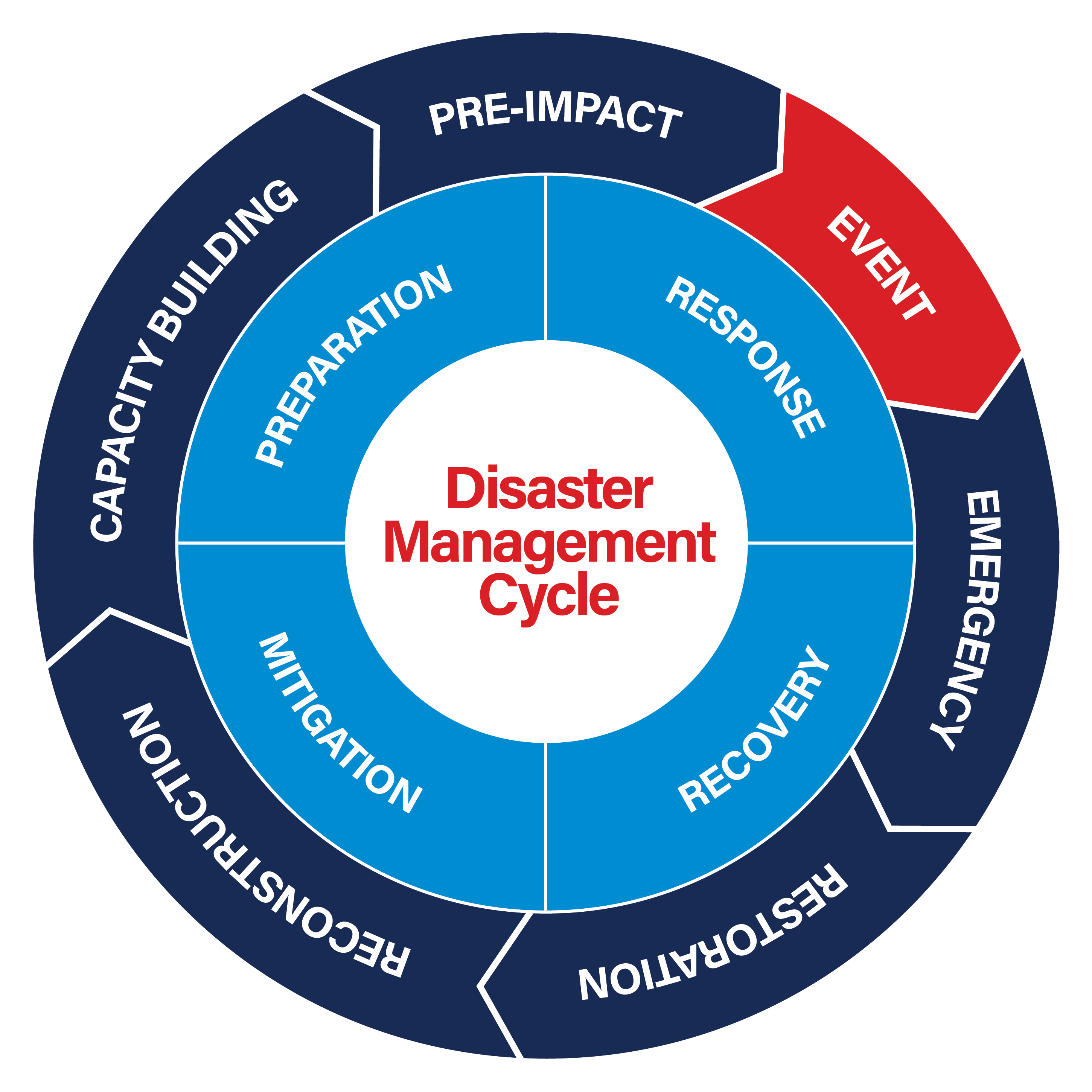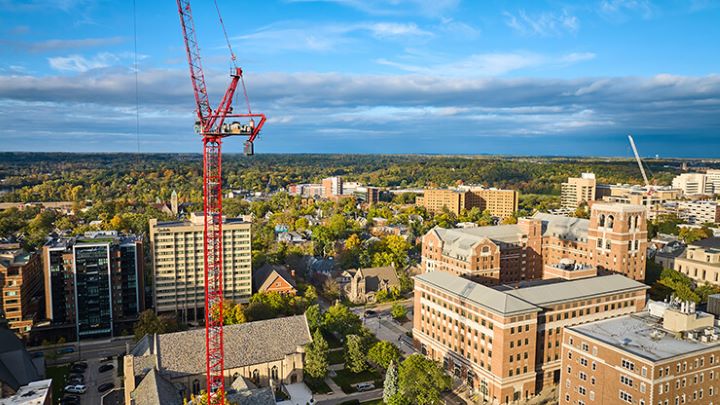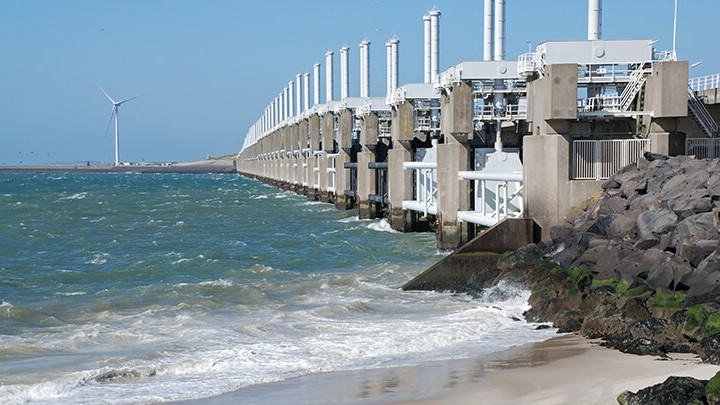Disaster mitigation has become a critical component of modern urban planning. In recent years, the frequency and intensity of natural disasters have been on the rise. For example, in 2023 alone, natural disasters caused $94.9 billion in damages in the United States. From hurricanes and floods to wildfires and earthquakes, these events disrupt lives and pose significant challenges to urban infrastructure and economies.
In the face of these growing threats, the concept of building resilient communities has gained prominence in urban planning discourse. At the heart of resilience lies disaster mitigation, a proactive approach aimed at reducing the vulnerability of communities to natural hazards.
In this article, we will explore the critical role of disaster mitigation in modern urban planning and its implications for building resilient communities.
Understanding Disaster Mitigation

Disaster mitigation encompasses proactive and reactive strategies to minimize the risks and impacts of natural hazards on communities.
Proactive measures focus on reducing vulnerability, enhancing resilience, and preventing or lessening the severity of future events. Reactive strategies, on the other hand, occur after a disaster happens and use lessons learned to rebuild communities stronger than before to mitigate future risks from disasters.
Combining these approaches ensures a comprehensive framework for protecting communities and fostering long-term resilience.
Implementing the Disaster Management Cycle

Disaster mitigation includes a wide range of actions, policies, and interventions aimed at various stages of the disaster management cycle, including preparedness, mitigation, response, and recovery. This graphic is an example of the different phases of the disaster management cycle and where each stage may take place after a disaster event occurs.
Mitigation
- Mitigation encompasses a wide range of structural and non-structural measures designed to reduce the vulnerability of communities to natural hazards. This may involve land-use planning, zoning regulations, building codes, and environmental conservation efforts aimed at reducing exposure to hazards such as floods, earthquakes, wildfires, hurricanes, and tsunamis.
- Structural mitigation measures include the construction of levees, dams, seawalls, flood barriers, and earthquake-resistant buildings, while non-structural measures focus on education, public awareness, early warning systems, and land-use planning.
- By investing in mitigation, communities can minimize the impact of disasters, protect lives and property, and enhance their overall resilience to future events.
Preparation
- Preparedness is a fundamental component of disaster mitigation, involving activities that increase the readiness and capacity of communities to respond effectively to potential hazards. This includes developing emergency plans, conducting drills and exercises, establishing communication networks, and educating the public about risks and protective measures.
- By investing in emergency preparedness, communities can improve their ability to anticipate, mitigate, and manage the impacts of disasters, thereby reducing the loss of life and property.
Response
- Disaster response refers to the actions taken during and immediately after a disaster to save lives, protect property, and meet the immediate needs of affected individuals and communities.
- While mitigation aims to reduce the need for emergency response, it is essential to have robust response capabilities in place to manage the aftermath of disasters effectively. This includes mobilizing emergency services, conducting search and rescue operations, providing medical care and shelter, and restoring essential services such as water, power, and transportation.
Recovery
- Recovery involves the long-term process of rebuilding, restoring, and revitalizing communities in the aftermath of a disaster. While mitigation measures can help minimize the need for recovery efforts, it is essential to have comprehensive recovery plans and resources in place to facilitate the recovery process.
- This includes repairing damaged infrastructure, restoring livelihoods, providing financial assistance to affected individuals and businesses, and addressing the social, psychological, and economic impacts of disasters.
Integrating Disaster Mitigation into Urban Planning

In modern urban planning, disaster mitigation is increasingly recognized as a fundamental component of sustainable development. Planners and policymakers are acknowledging the importance of integrating mitigation measures into land-use plans, zoning regulations, building codes, and infrastructure investments.
By considering the potential risks and vulnerabilities associated with natural hazards, cities can make informed decisions to minimize exposure and enhance resilience.
Multi-Hazard Approach
Effective disaster mitigation requires a multi-hazard approach that considers the range of natural hazards faced by communities. While some hazards may be more prevalent in certain regions, others can have cascading effects or compound vulnerabilities.
For example, a coastal city may need to address the risks of hurricanes, storm surges, and sea-level rise, while also considering the potential for earthquakes and tsunamis. By adopting a comprehensive approach, cities can better prepare for the complex and interconnected nature of modern disasters.
Incorporating Climate Change
Climate change adds another layer of complexity to disaster mitigation and urban planning. Rising temperatures, changing precipitation patterns, and more frequent extreme weather events are altering the landscape of risk and vulnerability.
As such, cities must factor climate projections into their mitigation strategies and long-term planning efforts. This may involve measures such as green infrastructure to mitigate urban heat islands, adaptive building design to withstand temperature extremes, and coastal restoration projects to buffer against sea-level rise.
Community Engagement and Empowerment
Central to effective disaster mitigation is the involvement of local communities. Engaging residents in the planning process helps identify unique vulnerabilities and priorities, and also fosters a sense of ownership and empowerment within the community.
Community-based organizations, neighborhood associations, and grassroots initiatives play a vital role in building social capital, fostering solidarity, and strengthening resilience. By incorporating local knowledge, values, and cultural practices, planners can ensure mitigation efforts are contextually relevant and inclusive.
Public and Private Partnerships
Collaboration between the public and private sectors is essential for implementing comprehensive disaster mitigation strategies. Private developers, businesses, and industries have a stake in protecting their assets and operations from natural hazards.
Through partnerships with government agencies, academia, and civil society organizations, they can contribute expertise, resources, and innovative solutions to enhance community resilience.
Public and private partnerships can also facilitate the development of risk transfer mechanisms such as insurance, reinsurance, and catastrophe bonds, which can help finance recovery efforts and reduce the fiscal burden on governments.
Investing in Disaster Resilience

An investment in disaster resilience is an investment in the future well-being of communities. The upfront costs associated with implementing disaster mitigation measures may seem daunting, but the long-term benefits they offer far outweigh the initial expenditure.
Below are reasons why investing in resilience is crucial for the sustainability and prosperity of urban areas:
Cost Savings
Mitigation measures, such as retrofitting buildings, improving infrastructure, and implementing early warning systems, may require significant initial investment.
However, studies have consistently shown that every dollar spent on mitigation can yield substantial cost savings in disaster-related damages and recovery expenses. By investing in resilience now, cities can avoid the much higher costs of rebuilding and recovery in the aftermath of a disaster.
Protection of Critical Assets
Infrastructure, businesses, homes, and public services are all vulnerable to natural hazards. Investing in resilience helps protect these critical assets from damage, disruption, and loss.
For example, upgrading levees and flood defenses can safeguard industrial facilities from floodwaters, while seismic retrofitting can ensure the structural integrity of essential infrastructure during earthquakes. By preserving these assets, cities can maintain essential services, economic activity, and quality of life in the face of disaster.
Enhanced Public Health and Safety
Disasters can have profound impacts on public health, ranging from injuries and fatalities to the spread of infectious diseases and mental health issues. Investing in resilience measures such as improving healthcare infrastructure, strengthening emergency response systems, and promoting community preparedness can help minimize these risks.
By prioritizing public health and safety, cities can reduce the human toll of disasters and ensure residents have access to the care and support they need during and after a crisis.
Environmental Sustainability
Many resilience measures, such as green infrastructure, sustainable urban design, and ecosystem restoration, have co-benefits for the environment.
Green spaces, wetlands, and urban forests help mitigate the impacts of natural hazards such as floods and heatwaves and provide numerous ecosystem services, including improved air and water quality, carbon sequestration, and biodiversity conservation.
By investing in resilient, nature-based solutions, cities can promote environmental sustainability while enhancing their resilience to climate change and other hazards.
Economic Stability and Growth
Disasters can have far-reaching economic consequences, disrupting supply chains, displacing workers, and undermining investor confidence. By investing in resilience, cities can bolster their economic stability and create an environment conducive to long-term growth and prosperity.
Resilient infrastructure, reliable utilities, and robust emergency management systems can attract businesses, spur innovation, and stimulate investment, driving economic development and job creation in the process.
Social Cohesion and Community Well-Being
Strong, resilient communities are built on a foundation of social cohesion, trust, and solidarity. Investing in resilience fosters a sense of shared responsibility and collective action among residents, businesses, and government agencies.
By promoting community engagement, equity, and inclusion, cities can strengthen social networks, enhance mutual support mechanisms, and empower vulnerable populations. In times of crisis, these social bonds become critical lifelines, enabling communities to come together, overcome adversity, and rebuild stronger than before.
The Importance of Disaster Mitigation in Urban Planning

Disaster mitigation is a cornerstone of modern urban planning and a key ingredient in building resilient communities. By integrating mitigation measures into land-use decisions, infrastructure investments, and community engagement efforts, cities can reduce their vulnerability to natural hazards and enhance their capacity to withstand and recover from disasters.
As the threats posed by climate change continue to escalate, the imperative to prioritize resilience has never been greater. Embracing a proactive and multi-hazard approach to disaster mitigation can pave the way for a safer, more sustainable future for all.
At Tidal Basin Group, we understand the critical role disaster mitigation plays in building safer, more sustainable communities. We are committed to empowering individuals, organizations, and governments to take proactive steps to reduce risks, enhance preparedness, and mitigate the impact of disasters. Contact us today for more information.



